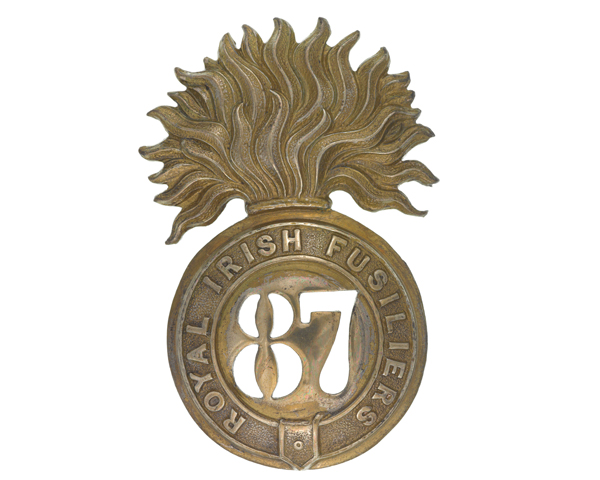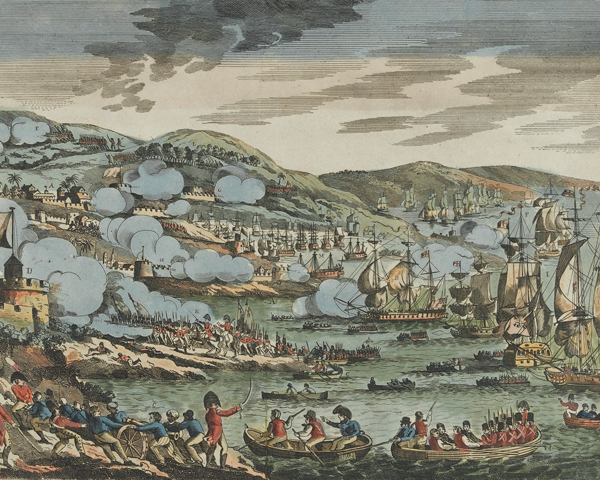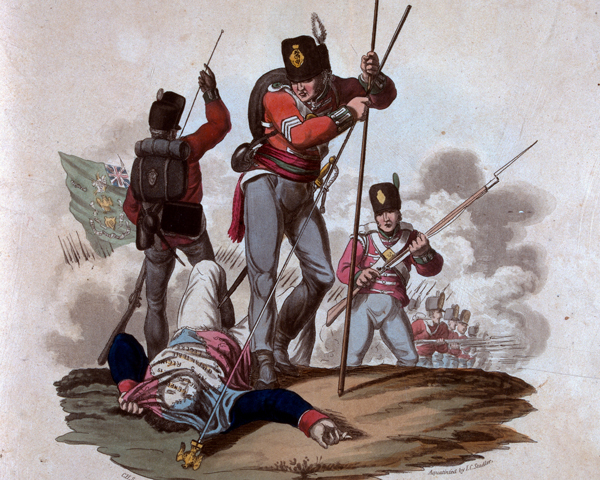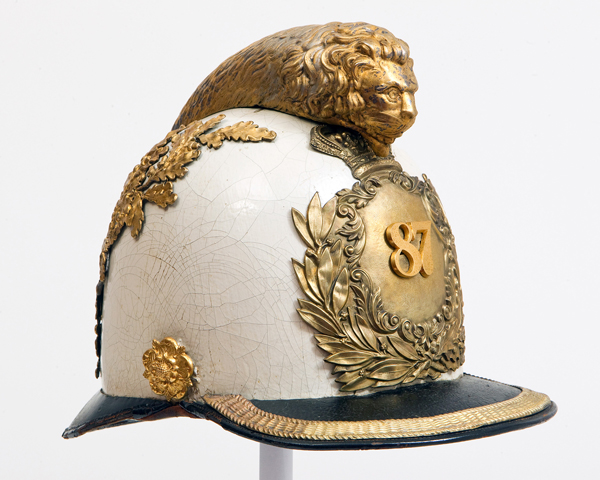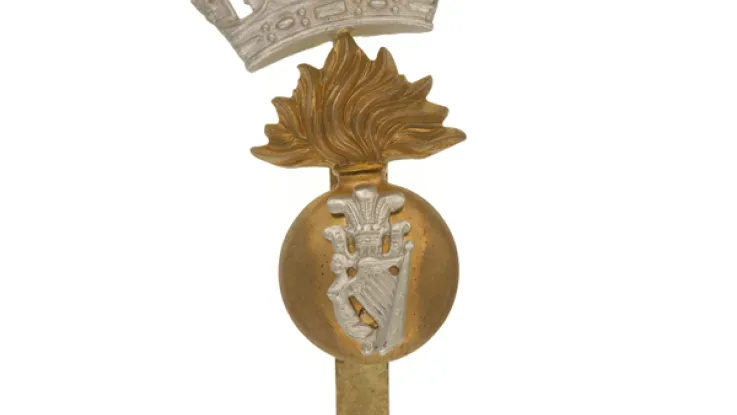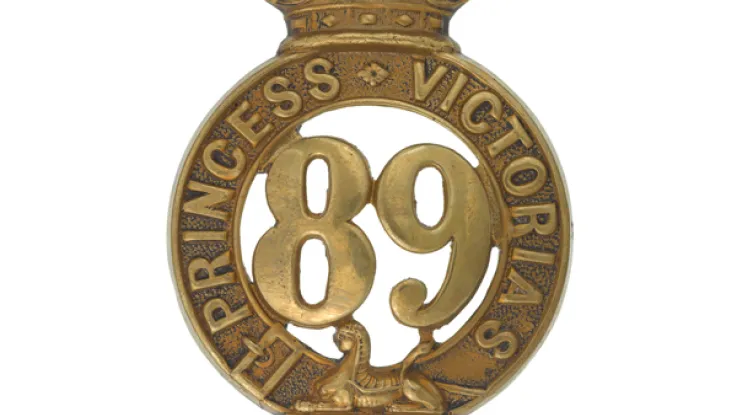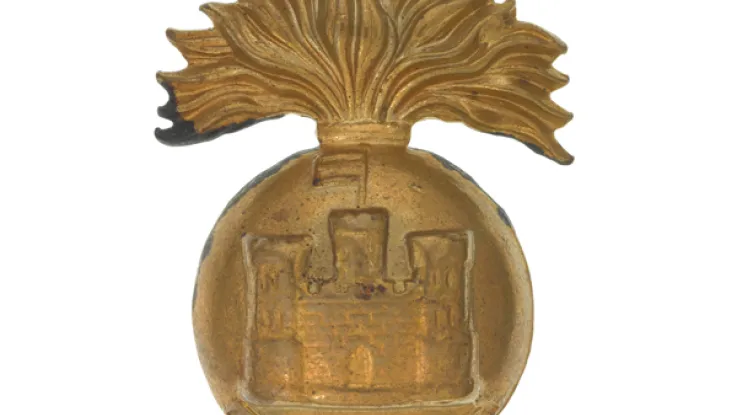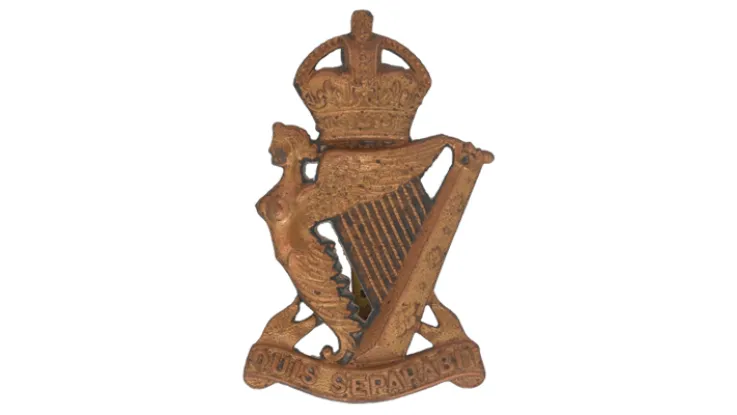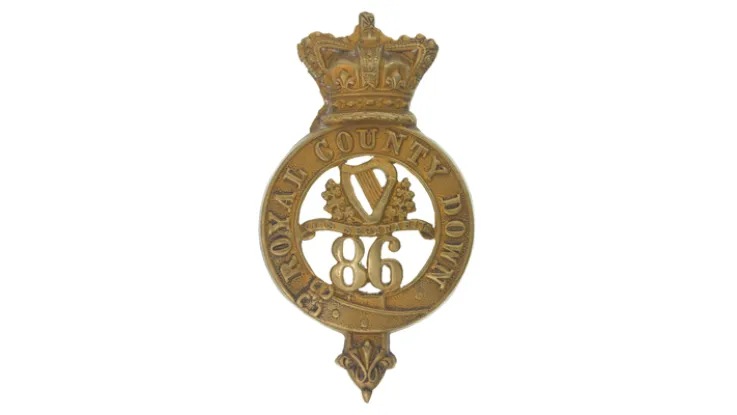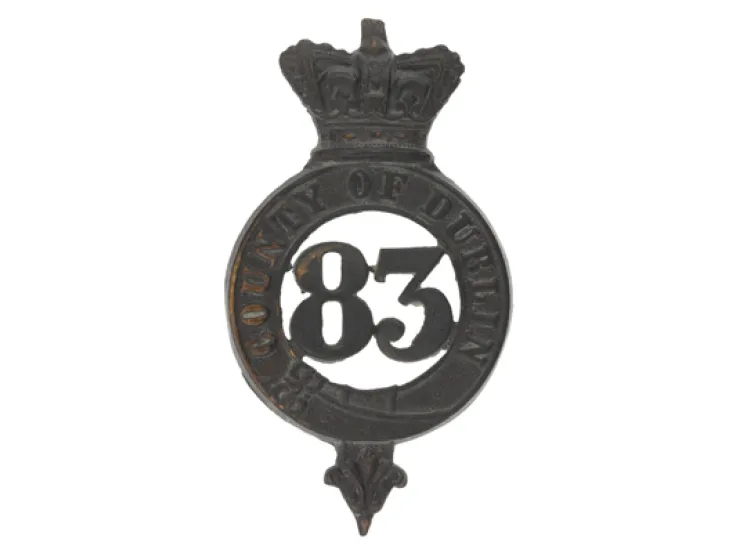Origins
In September 1793, Britain had been fighting Revolutionary France for less than a year, but was already in need of more men. That month, a new line infantry unit was raised in Ireland by General Sir John Doyle. It was numbered 87 and named as The Prince of Wales’s Irish Regiment.
The regiment was immediately sent to Flanders, but was captured at Bergen-op-Zoom (1795) and had to re-form in Ireland. By 1796, it was ready to go overseas again, this time to the West Indies for eight years, where it helped attack Puerto Rico in 1800.
Napoleonic era
In 1804, the regiment raised a 2nd Battalion. This lasted 13 years and mainly served in Ireland and the Channel Islands. The only exception was its time in the Peninsular War (1808-14), where it fought at Talavera (1809) and many other engagements.
During the battalion’s charge at Barrosa (1811), Sergeant Patrick Masterson captured a French eagle. The battalion also fought at Vitoria (1813), Nivelle (1813), Nive (1813), Orthes (1814) and Toulouse (1814).
Meanwhile, 1st Battalion remained in the Channel Islands and England until being sent on the abortive expedition to South America in 1806-07. During this operation, its light company was captured at Buenos Aires.
A posting to the Cape of Good Hope followed in 1807. It also took part in the capture of the Isle de France (Mauritius) in 1810.
19th century
In 1815, 1st Battalion went on its first Indian deployment, fighting during the First Burma War (1824-26). In 1827, the regiment added the honorific titles ‘Fusiliers’ and ‘Royal’ to its name.
In 1831, it returned to Mauritius. Then, from 1849, it was back in India, fighting on the North West Frontier during the Indian Mutiny (1857-59). It briefly moved to Hong Kong in 1860, before returning to Britain the following year for the first time in 12 years.
The regiment spent the rest of the 1860s and 1870s on garrison duty in England, Gibraltar, Malta, Nova Scotia, Bermuda and Guernsey.
Legacy
In 1881, it was amalgamated with the 89th (The Princess Victoria’s) Regiment to form The Royal Irish Fusiliers (Princess Victoria’s).
Regimental museums
The National Army Museum works with a network of Regimental and Corps Museums across the UK to help preserve and share the history and traditions of the Army and its soldiers.
Discover more about the 87th (Royal Irish Fusiliers) Regiment of Foot by visiting the Royal Irish Fusiliers Museum in Armagh.


